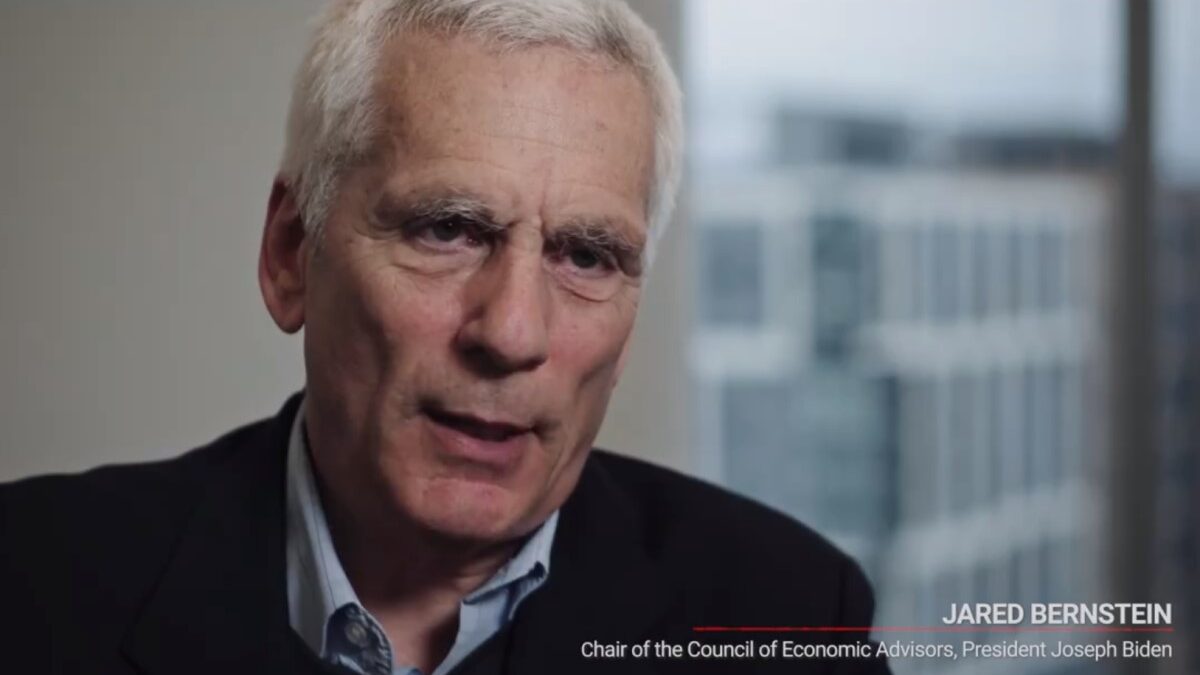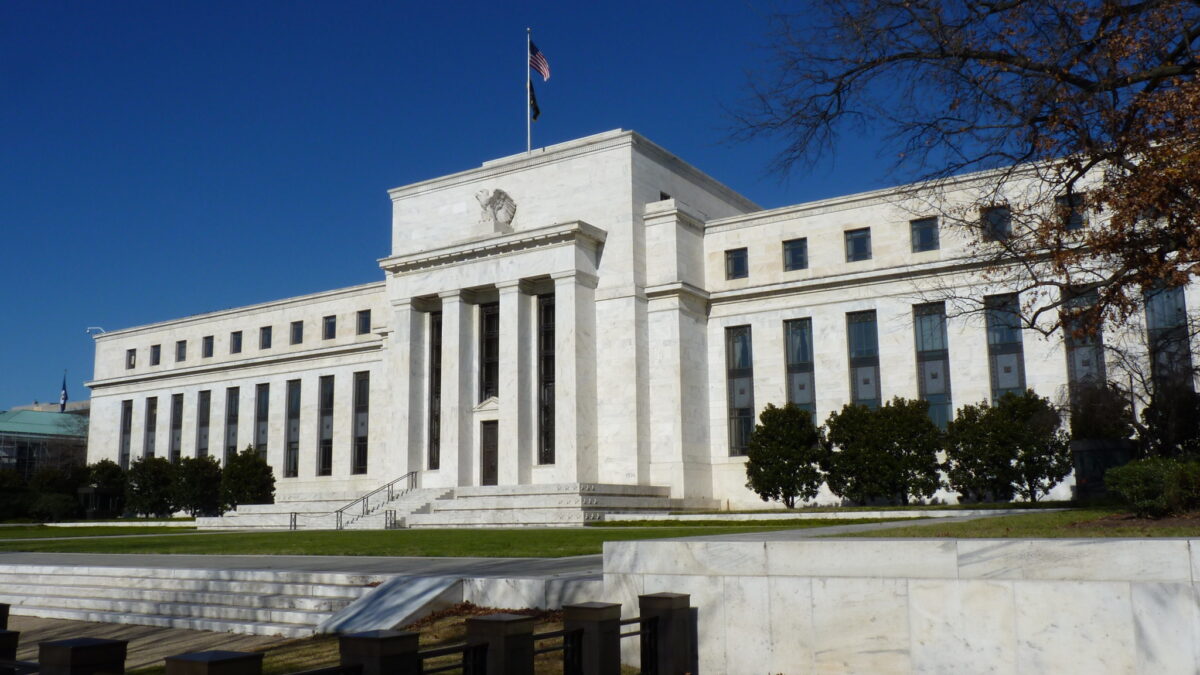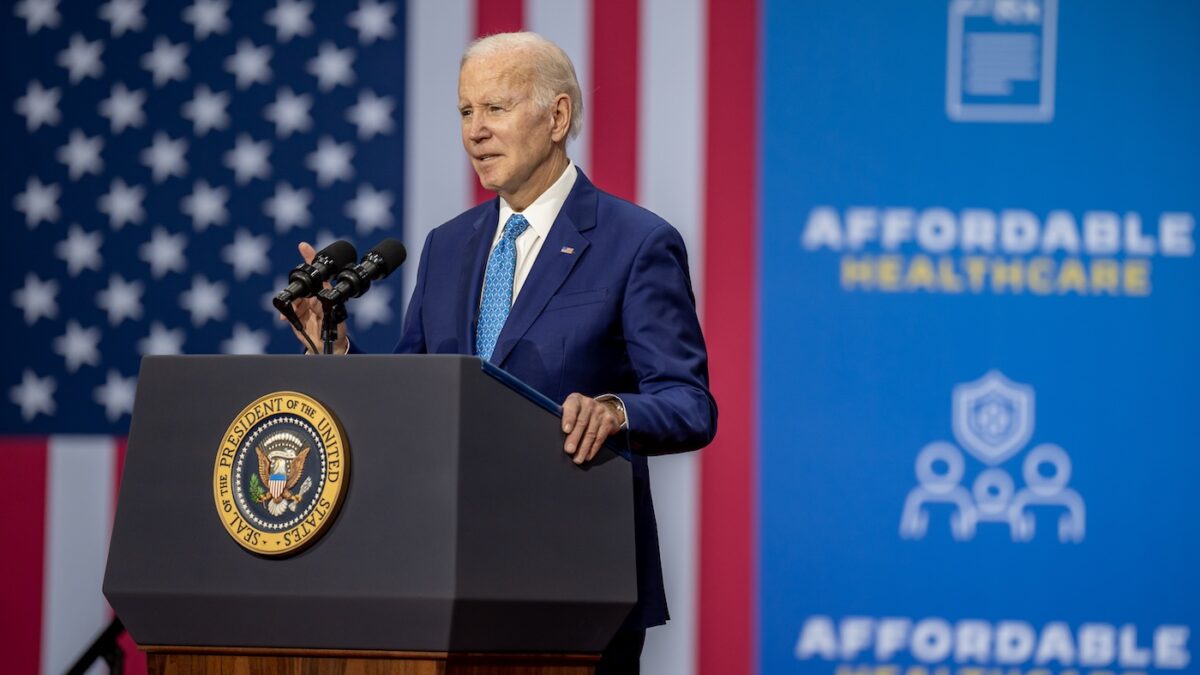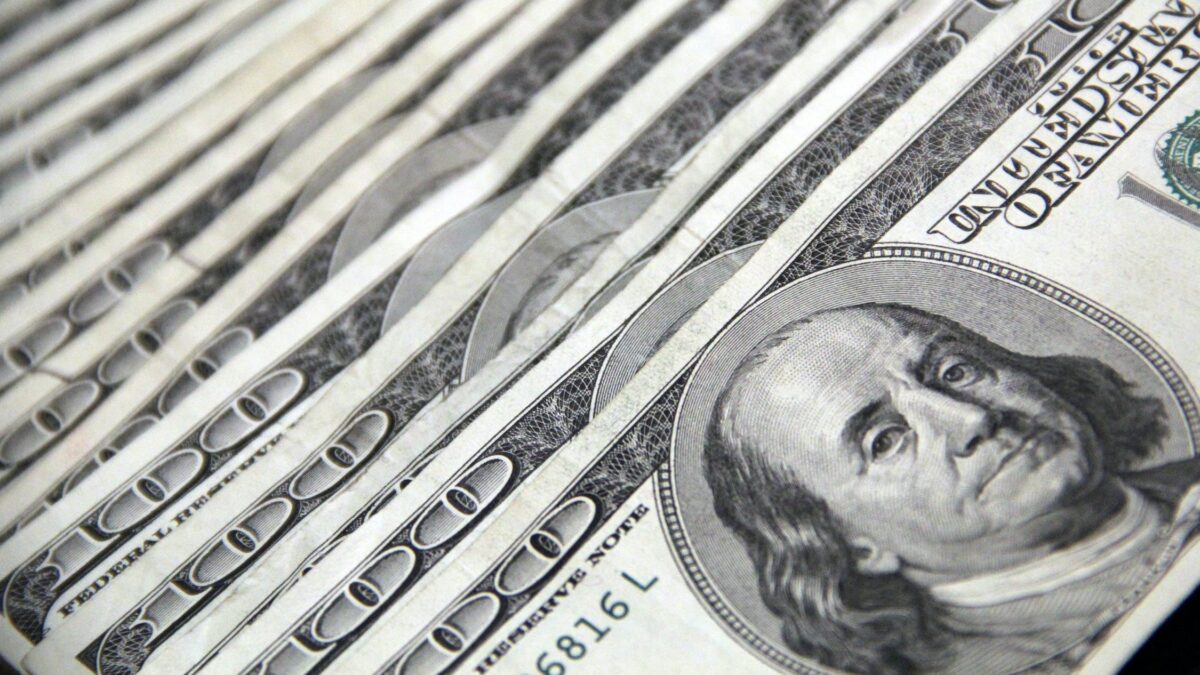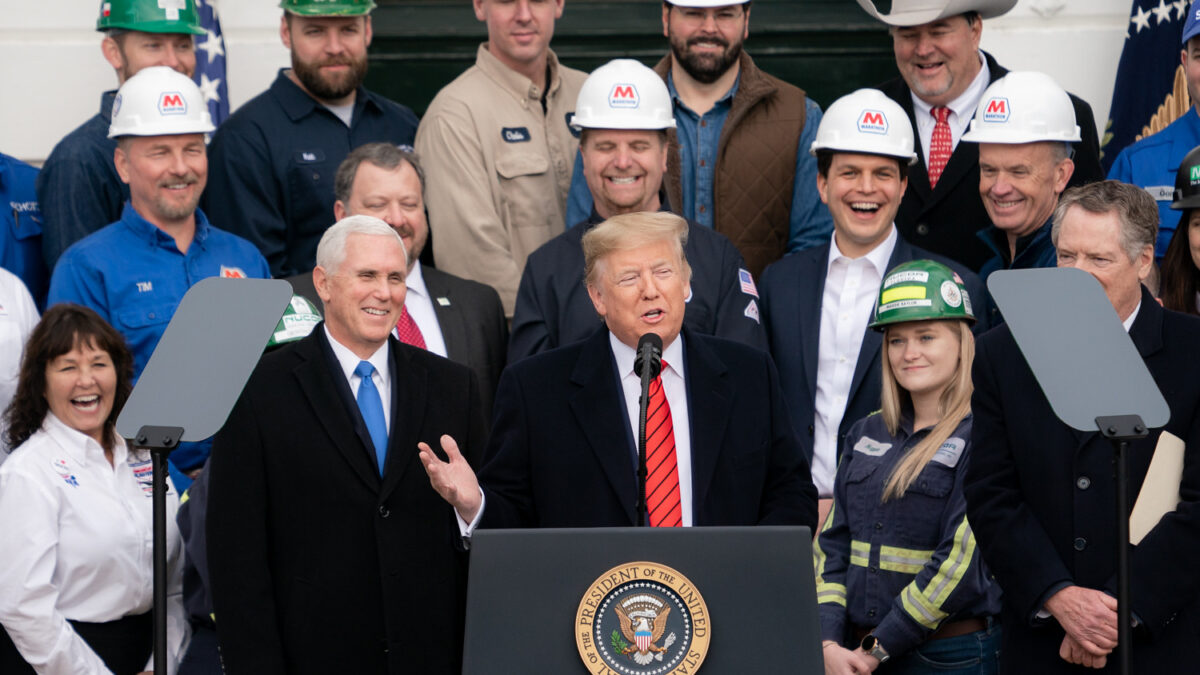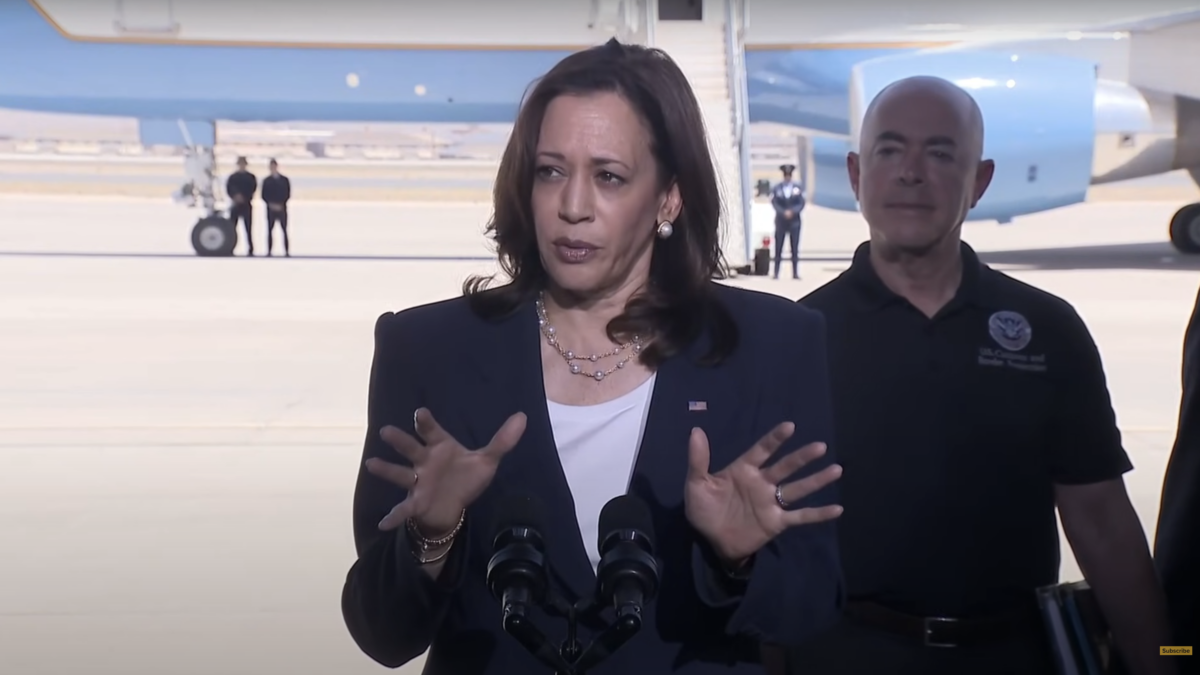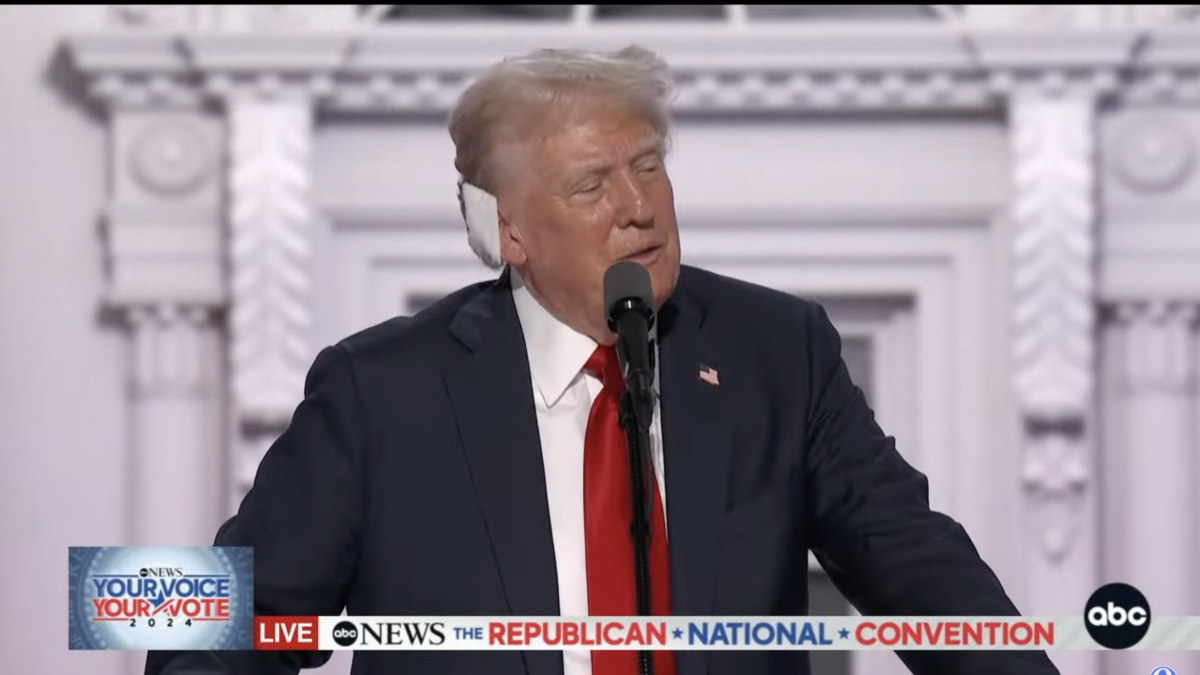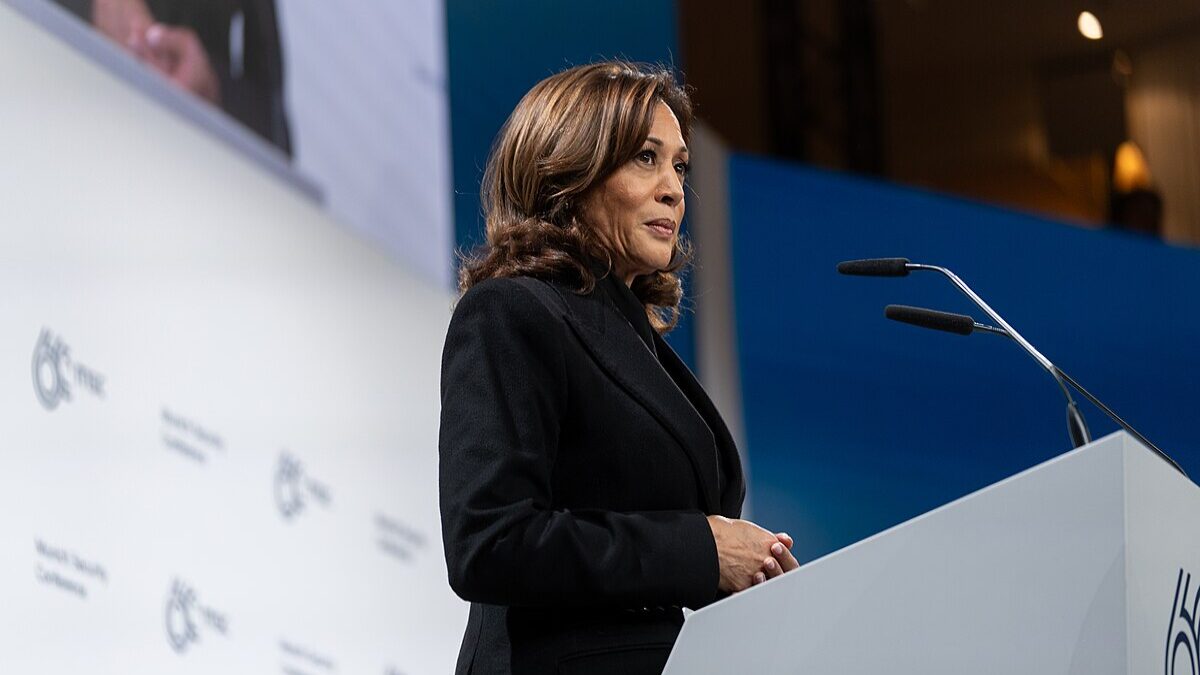A recent viral video receiving millions of views online explains why millions of American families continue to struggle with “Bidenflation.” Well, perhaps “explain” is too strong a term.
In the video, an excerpt from the new leftist documentary Finding the Money, Jared Bernstein, chairman of the White House Council of Economic Advisers, discusses modern monetary theory—the idea that the federal government could eliminate the national debt simply by printing money. To say Bernstein’s musings on the topic lack coherence is an understatement:
Anyone who feels more confident about “Bidenomics” after watching this video probably should get his head examined.
Who Prints the Money?
The problems with modern monetary theory, and Bernstein’s comments about it, starts with his assertion that “government prints the money.” It’s a true enough statement, but could benefit from some unpacking.
Most people don’t spend time reading the notes in their wallet or purse, but the Federal Reserve Board issues American currency. The Treasury Department, via the Bureau of Engraving and Printing, creates the currency, but the Fed actually issues it, after paying the Treasury for the cost of production. This system explains why the words “Federal Reserve Note” appear at the top of paper currency in circulation.
Independent Monetary Policy
For more than a century, since the 1913 enactment of the Federal Reserve Act, the Fed has conducted monetary policy by determining how much money to print. In theory, at least, it has spent most of that time formulating policy independent of elected officials such as the president and Congress.
When elected officials have intervened in monetary policy, the results have often proved disastrous. As this publication noted earlier in the year, President Richard Nixon got Fed Chairman Arthur Burns to keep interest rates low as he faced re-election in 1972. But after the election, the Fed had to more than double interest rates because inflation soared.
In theory, this conservative would prefer that unelected bureaucrats not make decisions that affect so much of our nation’s economy. But given the way Washington continues to spend trillions of dollars it does not have to win voters’ approval, does anyone really think that politicians would raise interest rates when they needed to so to keep inflation in check?
Recipe for Hyperinflation
That gets to the basic premise of modern monetary theory: the idea that the federal government need not incur massive amounts of debt, because it can just print more money. The simplest explanation for the flaw in this strategy comes from the shorthand definition of inflation—too much money chasing too few goods.
The trillions of dollars in Covid “stimulus” represented one version of this phenomenon. With Washington sending out “stimmy” checks to Americans nationwide, and paying people more to stay on unemployment than to go back to work, families found themselves with more spare cash to spend. Couple that with the economic chokepoints lockdowns caused—both supply chain snags and the fact that people couldn’t readily spend money on services (such as travel and dining out) for much of 2020—and prices for goods like automobiles and home furniture soared.
If fully implemented, modern monetary theory would put “Bidenflation” on steroids, pumping trillions more dollars into the economy to fund things like student loan bailouts at a time prices remain stubbornly high. It would also undermine the Federal Reserve’s credibility on inflation, at a time the institution is trying to recover from its own self-inflicted wounds.
Ironically, the Wall Street Journal recently reported that the Trump campaign is considering a separate series of policy proposals intended to “blunt” the Fed’s independence. But if Trump’s proposals for greater tariffs would exacerbate inflation (and they would), modern monetary theory poses a far greater risk to the economy and to the Federal Reserve.
To sum up: While the Fed is cleaning up some of the messes it made by printing money for the better part of the past 15 years, people on the Left want to make those messes even worse. They would do so by undermining the Fed in ways that go far beyond the Trump proposals that one prominent liberal called “a coup.” Yet somehow Bernstein lacked the knowledge, the wherewithal, or (quite likely) both to explain all this in the clip.
Ignorant Policy ‘Expert‘
Maya MacGuineas of the Committee for a Responsible Federal Budget attempted to defend Bernstein’s shambolic comments in an interview with Fox Business: “What you have there is a serious, credible economist—Jared Bernstein—trying to be polite about a nonsensical economic fairytale that can’t even be called a theory. MMT is forever being reinvented by its defenders who use made-up excuses for why you don’t have to pay for anything.”
Put aside for a moment the idea that any reporter would accept “I was just being polite” as a justification for indulging fringe policies or theories on the right. The fact that Bernstein couldn’t formulate a concise refutation of MMT in an interview he knew would be about modern monetary theory speaks to both a lack of preparation for the interview and a lack of skills in translating economic theory into practical terms the public can understand, to use the most charitable interpretation.
Here’s a suggestion: Maybe the administration should select someone as chair of the Council of Economic Advisers who has a degree in economics, rather than an undergraduate degree in music and graduate degrees in social work. Better yet, the administration should start pursuing policies that make sense with economic reality, rather than indulging leftist crackpot theories that will exacerbate our current inflationary problems.
